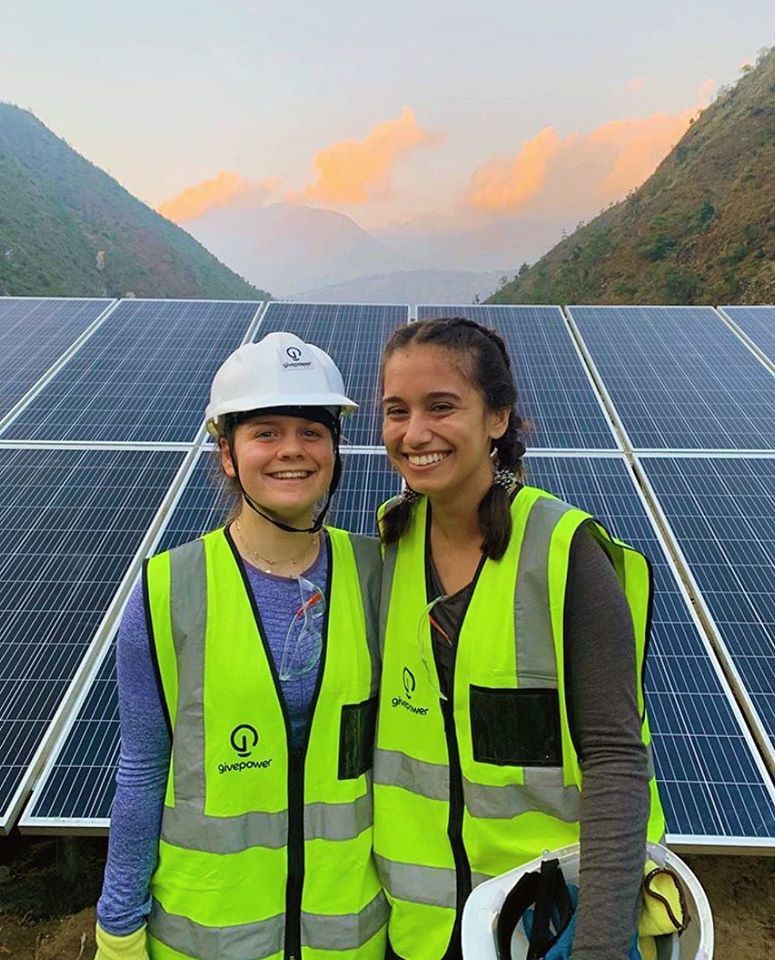And so, the adventure comes to a close. I am back in Wales ready for Christmas, in a constant state of awe for what I have just experienced. Nepal brought some of my most cherished memories, some of my most grateful friendships, and some of the most beautiful sceneries I have ever seen. It certainly exceeded any of my expectations and has taught me so much in such a short timeframe.
Meet Katie
Nepal: Microgrid Systems for Rural Development
December 2019
The University of Sheffield, England
Major: Chemical Engineering
Shine On Scholarship Recipient

We started our journey in the city of Kathmandu
Immersing ourselves in Nepal’s rich heritage. Quickly, we found ourselves in the classrooms of Kathmandu University, where we were taught about the Nepalese culture, about climate change, sustainable development, the tragic earthquake which occurred in 2015, and the current state of the energy infrastructure in the country. Later, our focus turned specifically to solar power, and its potential to bring so many new opportunities to the rural villages of Nepal, where funding from the government is scarce.

On our 4th day, we set off on a 6-hour drive to Kalleridovan in the Sindhuli District for 4 days of community involvement. We were greeted with flower lays, tikā and tea. I am filled with gratitude for the warm welcome we received, and for the villagers making us feel like family from the get-go. We were invited to stay in their homes, and the hospitality we received was unlike anything any of us had previously known; the Nepalese are truly incredible people.
Having consulted with the villagers, and ‘Give Power’ (who made this project possible), and learning that their corn crops were completely destroyed in the previous harvest due to an adverse climate, we set off to build a solar mini-grid that would power a water pump. This pump will take water from a well (which we also built), and will distribute the water up the hillside. Consequently, the village can maintain its self-sustainability, by ensuring constant irrigation of their arable land. This project secures access to this water for around 40 households (approximately 200-250 people). Many of those people came down to the site to watch us work, constantly trying to help us; I have never met such selfless people, and have learned as much from them as I have from the academic and hands-on work associated with this program. Again, I am reminded of the fact that people used to communicate before languages even existed, and that we can continue to respect and communicate with each other today, irrespective of whatever our mother tongue is. With that in mind, following the completion of the building work, and watching the first flow of water irrigate the crops, we danced and sang into the night, in celebration of each other and our mutual generosity.


The trip came to a close back in Kathmandu, with a couple of days back at the university for our final presentations. With the academic work drawing to a close, we spent our last evening together reflecting on our trip, and expressing our gratitude. Personally, I can honestly say I will always be able to look back on this trip as one of the most incredible things I have ever done. From the cohort to the guides, from the people at ‘Give Power’ and at ‘The Green Program’, to the villagers, everything was wonderful. I would highly recommend to anyone who wants to make a positive change in this world, to seek a first-hand opportunity such as this one. I cannot wait to visit my new friends in the near future and to get stuck into my next project.
